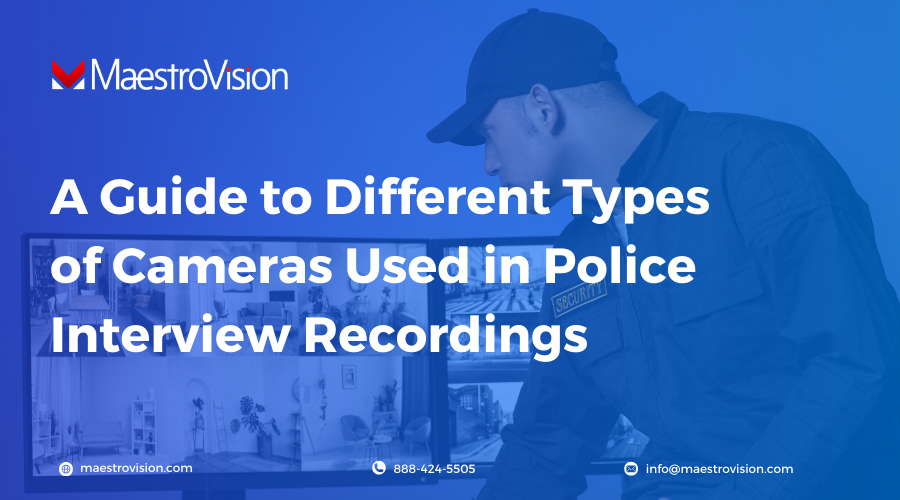If you’re wondering what type of camera to use in your interview room, look no further. In this article, we’ll explain the three main types of cameras that are used for interview recordings: IP, USB and HD-SDI. We will compare each of them and provide their pros and cons.

IP CAMERAS
IP stands for Internet Protocol. IP cameras are the most popular on the market. These cameras are designed for surveillance, easy to install and can be located at considerable distances. To install an IP camera, simply connect it to an Ethernet router. There is no need for power since the router will provide it via a technology called PoE (Power over Ethernet). Because of its popularity within the surveillance market, there are a wide variety of IP cameras available, from fixed position to PTZ (Pan, Tilt and Zoom), mounted in dome, bullet or hidden cases. You will find whatever type you require by making a search on Internet.
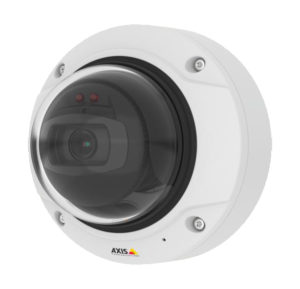
Figure 1 - IP Camera 1
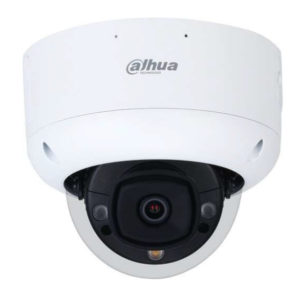
Figure 2 – IP Camera 2
How it works
The IP camera captures the video via a sensor chip and encodes it to an h.264 video streaming format. The video is encapsulated into packets. Connected to the internal Ethernet router, these packets are then accessible by any computer connected to the router (or worldwide if the router is configured accordingly). This allows more than one computer to have access to these packets. The packets are then recognized by a software that decapsulates the video content, generating the video on the computer screen.
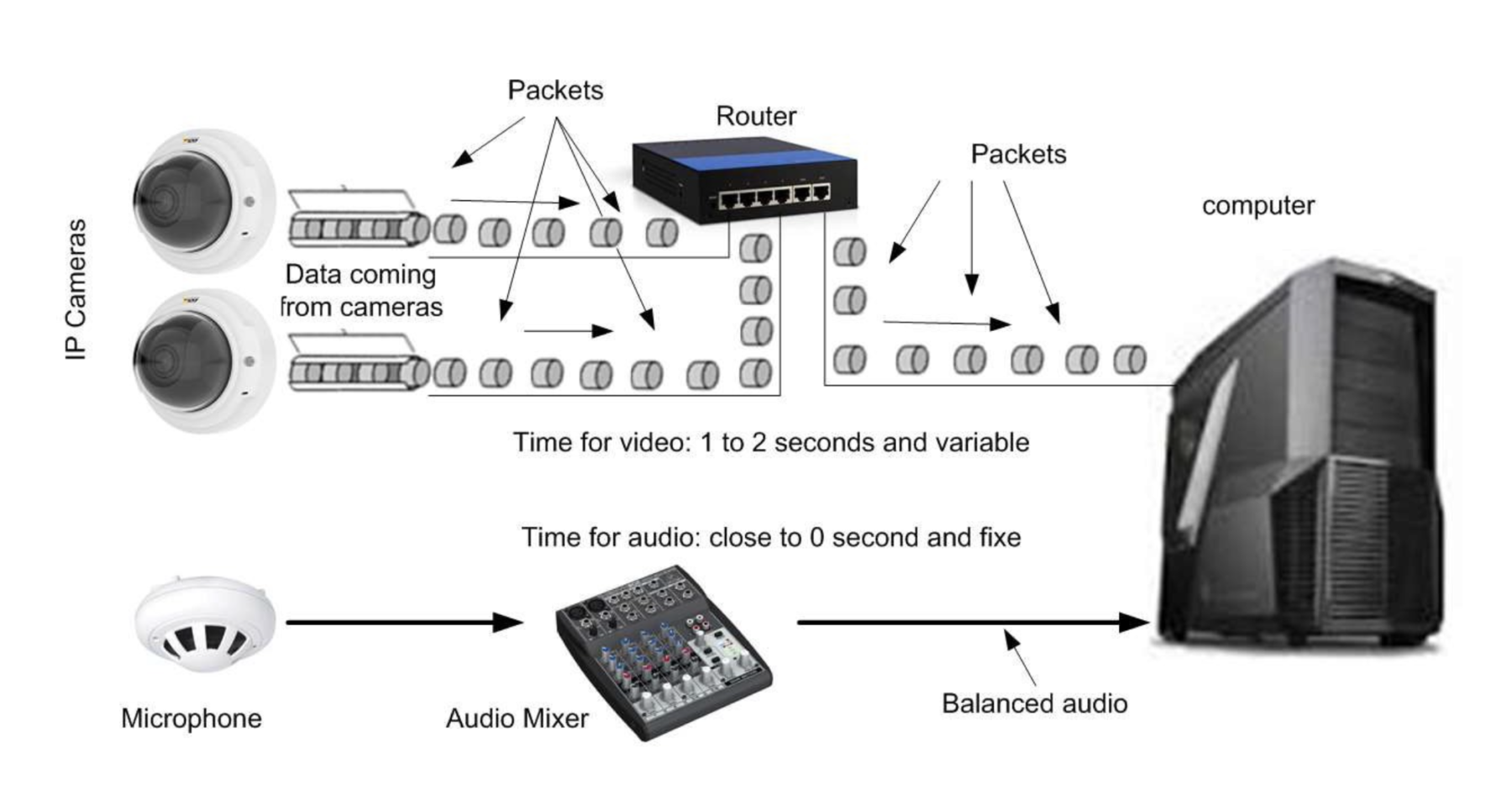
Figure 3 – IP Cameras audio and video capture
The pros
There are a variety of IP cameras available. The video generated is already encoded in h.264 allowing manufacturers to develop many applications for it. It is also easy to install and configure.
The cons
IP cameras are designed for surveillance that does not require very high quality. They generate video and audio of a poorer quality than other types of cameras. The cause of their poorer quality comes from the way the signal is encoded. The encoding is created from a small chip installed in the camera.
Because of the cost benefit, the algorithm used in IP cameras offers a much lower quality video output.
The audio output of an IP camera is even poorer. The audio connection type in an IP camera is unbalanced. This type of audio connection provides a smaller bandwidth, and the audio cable cannot be longer than 12’. The result is poor audio quality, creating issues such as bad distinction between hearing the letters “S” or “F”. (See more information in section 3.1.)
Most interview recording installations will bypass these audio issues by connecting the audio directly to the recording computer. But because the video is sent in packets and the audio in real time, it is not possible to perfectly synchronize the two together. The result creates a situation where the lips are not synching with the voice during playback. See Figure 3.
Because this technology connects to the internal Ethernet router, if there is a breakdown on the network, all the interview rooms will be out of service.
Finally, because IP cameras are network connected, they are more vulnerable to external hacking.
USB CAMERAS
USB cameras are becoming more popular. Like IP cameras, there is a wide choice available from fixed, PTZ, dome, bullet, hidden and more. This type of camera is designed to connect directly to your computer via a USB port. It is widely used for teleconferencing, classroom recording or other applications such as FaceTime or Skype.
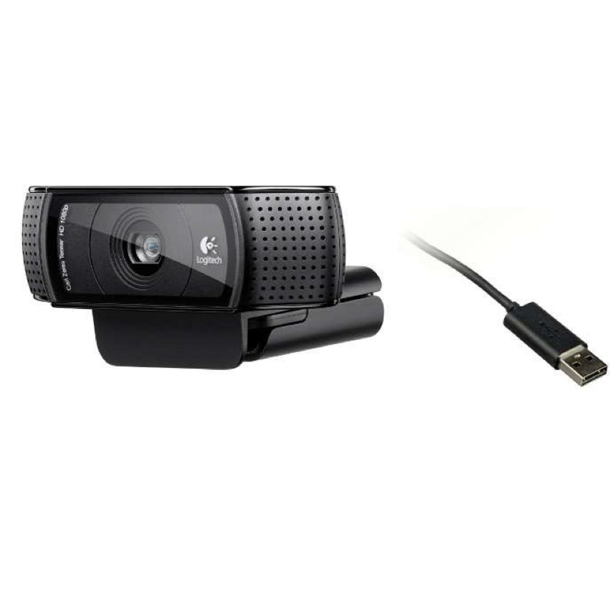
Figure 5 – USB Camera

Figure 4 – USB Pine Hole Camera
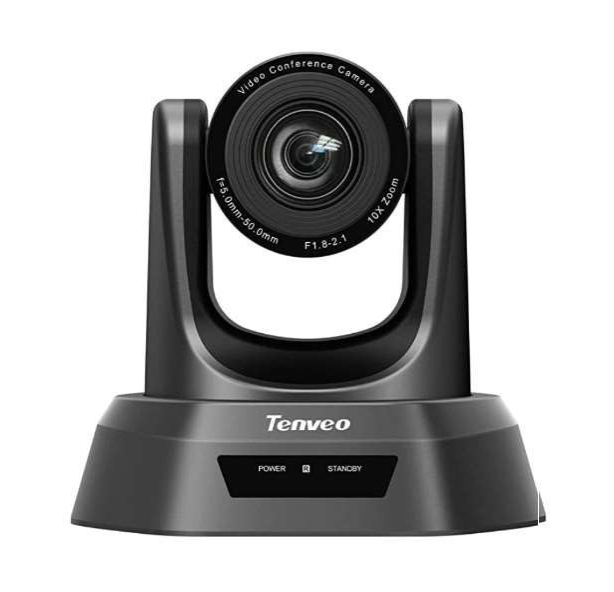
Figure 6 - PTZ USB Camera
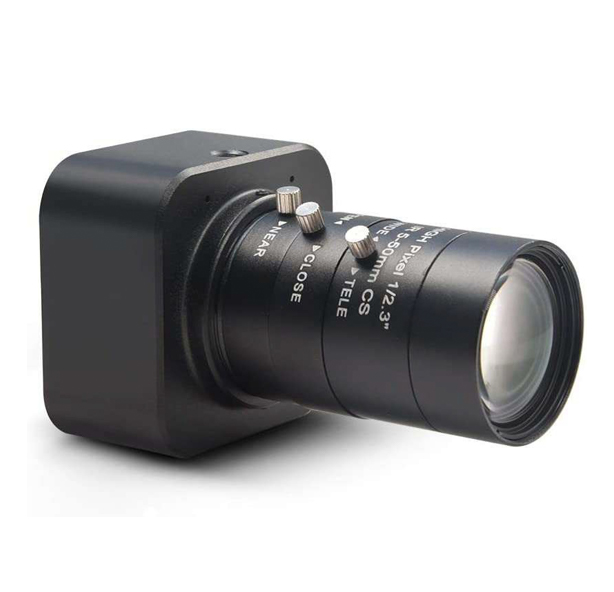
Figure 7 - Varifocal USB Camera
The pros
USB cameras are widely available. The quality of the video is acceptable for interview recording. The limitation of the 15’ cable is overcome by using a USB extension module, which will provide up to 330’ between the camera and the computer. Because USB technology utilizes the real time transmission of video, it is possible to connect the audio directly to the computer and get full synchronization between video and audio. This type of camera can be used for either fixed or portable interview recording technology.
The cons
The weakness of USB cameras comes from the fact that the encoding occurs in the computer. This means greater utilization of the CPU. Depending on the computer, the number of simultaneous recordings can be limited to six. The USB technology happens to be less stable than the HD-SDI technology. A disconnection and reconnection of the USB cable is required to stop and subsequently restart the recording application.
HD-SDI cameras
HD-SDI stands for High-Definition – Serial Digital Interface. This technology was developed and still being used by television stations today. The SMPTE (Society of Motion Picture and Television Engineers) created this format for the highest possible quality of video and audio required by broadcasters. This technology provides a stunning result when encoded in h.264 format. To obtain such an outcome, the video is encoded using hardware encoders installed in the computer. The hardware encoder uses the foremost algorithm to provide the highest quality output that is ideal for law enforcement purposes. Because fewer applications exist outside of the broadcast industry, the range of HD-SDI cameras are more limited. There is a choice between fixed bullet, fixed dome, and PTZ (Pan, Tilt and Zoom) dome. Therefore, during interview recording where hidden cameras are not required, these options are more than suitable.
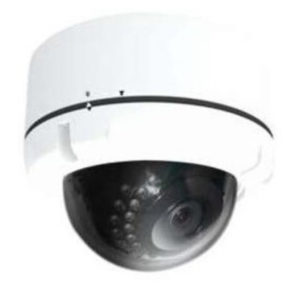
Figure 9 - HD-SDI Multifocal Camera
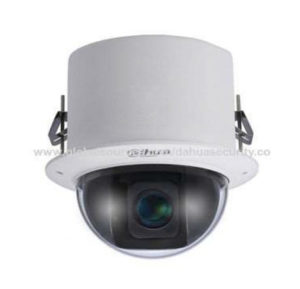
Figure 8 - HD-SDI PTZ Camera
The pros
This is the best technology for interview recording. HD-SDI technology provides the highest audio and video quality and offers excellent stability. There is perfect synchronization between audio and video. HD-SDI technology can record monitor screens. The connection of the audio is balanced audio that provides the highest bandwidth and the clearest sound quality.
The cons
Because of the hardware encoder card, this solution is more expensive and the varieties of cameras available are limited.
Lenses
The choice of lenses is important. We sometimes consider the quality of a lens by its capacity to zoom, but this is not so in an Interview Room application. Specific to interview rooms, the wide-angle capacity of the lens is more important than how close it can zoom onto an object. Subsequently, there is no requirement to zoom on an object that is only 1” in size.
It is important that within the interview room there is one camera that covers the whole space. This is to ensure that the subject cannot claim to be threatened by an officer, whilst outside the field of view of the camera.
It is also useful to have another camera that can zoom closer on the subject, and have the ability to record body language, facial expression and reactions.
Finally, if it could be a benefit to be able to record smaller objects such as a phone or documents.
When looking at camera specifications, it is useful to examine the optical zoom capability of the camera. This specification will determine how close it can get to an object and its width of the coverage.
There are many parameters to consider in determining the angle that the camera will cover. A rule of thumb is to multiply the distance to the object in meters by 4.8, then divide by the width yourequire. The result will provide the focal lens parameter needed in mm.

Example:
The room measures 3 meters by 3 meters.
In order to record the whole space, you will need a lens that covers 90 degrees, if it’s installed on a corner. The focal lens calculation shows a horizontal coverage of 4.24 meters, at a distance of 2.12 meters from the camera.
By using this formula in Figure 10, a lens with a focal distance of less than 2.4 mm is required. The less the focal lens, the wider the coverage.

Figure 10 – Camera wide-angle
As previously discussed, it is also important to have a second camera that can zoom closer in on the subject.
In the 3 meters by 3 meters interview room, to capture both the interviewee and the interviewer, will require a camera that has a focal lens of7.2mm. See Figure 11.
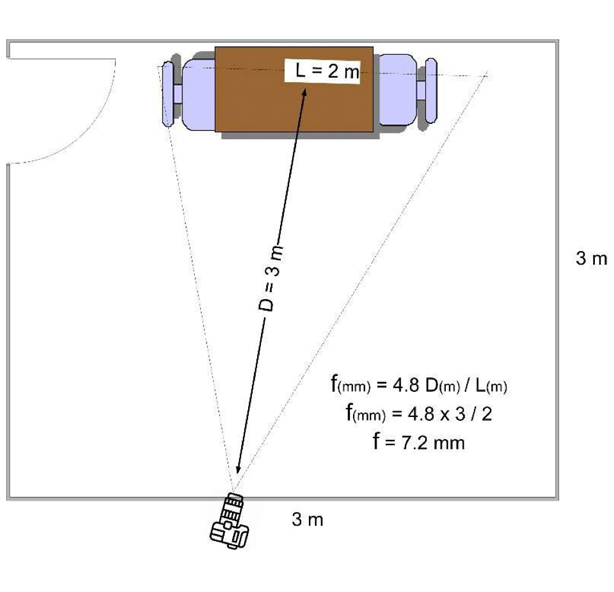
Figure 11 - Camera covering the table
Finally, for recording smaller objects such as a smart phone, a camera that has a focal lens of 96 mm is required. See Figure 13.
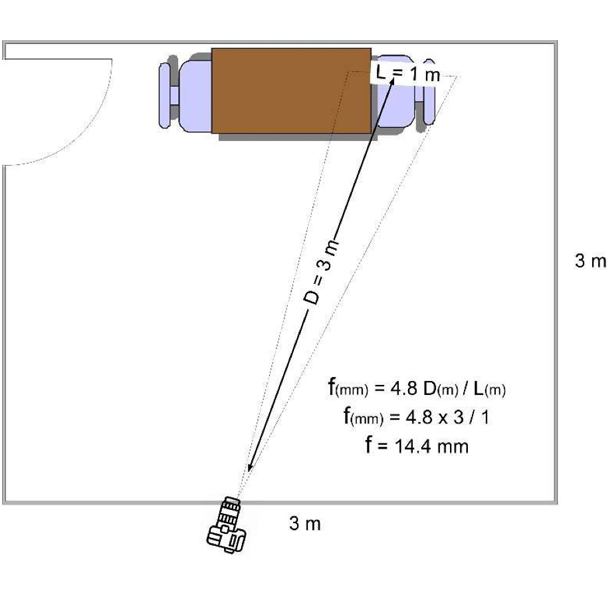
Figure 13 - Camera recording a smart phone
To record the interviewee’s facial reactions, a camera lens with a focal distance of 14.4 mm is required. See Figure 12.
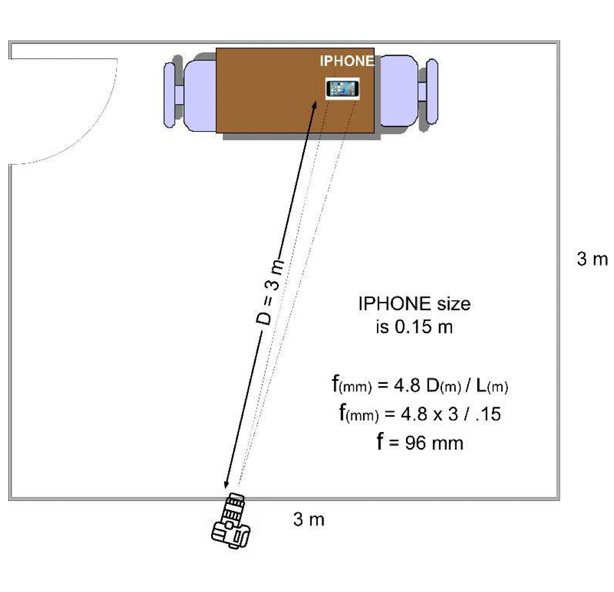
Figure 12 - Camera covering the interview
To summarize, in an interview room, obtaining two cameras is the minimum requirement. One fixed with a focal lens of 2.4 mm installed in the corner of the room, and another on the wall that has a 20X focal lens varying between 4mm and 120mm.
Finding cameras with these exact specifications can be difficult, but one can get close enough. For example, for the corner camera, one with a focal lens of 2.8 mm will work. It is not ideal, but it will suffice.
Have further questions? Email us at info@maestrovision.com and we’ll help you choose the best cameras and lenses for your interview room.

